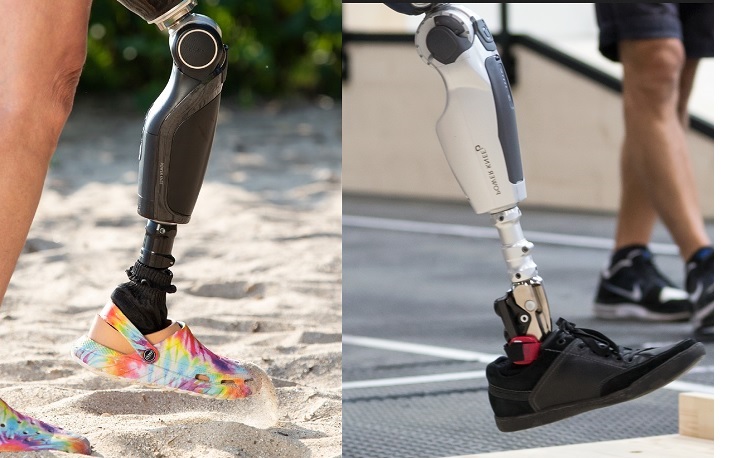“Five years from now,” says Dave McGill, “powered prostheses will be what microprocessor-controlled passive legs were in the early 2000s. And passive microprocessor-controlled devices will be the [standard] prosthesis you get as a new amputee. This version of Power Knee is a significant step in realizing that future.”
McGill is describing how the latest iteration of Össur’s Power Knee can raise the baseline not only for above-knee amputees, but for everyone who walks on a prosthesis. “Whenever there’s a technological advance that improves mobility, it helps all lower-extremity amputees,” he says.
Since Power Knee’s debut in 2006 as the first motor-powered artificial knee, Össur has gradually improved the product’s performance while eliminating inconveniences. Over time, it has become a more practical option for a greater number of amputees—and that trend continues with the latest release. McGill, vice president of compliance at Össur Americas and a longtime Power Knee user, describes the new model as “a full overhaul of the prior version. I was walking on a prototype of it in 2018, so this has been a multi-year process. There’s more than just a few tweaks to the software.”
What’s new and different about Power Knee ’22? Here are the highlights:

1. Lighter and trimmer
“The form factor of the knee has changed significantly,” McGill says. “It is much less bulky.” You can judge for yourself in the accompanying pixs (new model on the left, old model on the right). According to the product specs, the new version weighs in at two and half pounds, about 8 percent lighter (roughly four ounces) than the previous Power Knee.
2. More intuitive sit-to-stand and stair-climbing features
In previous iterations of the Power Knee, activating the power mechanism while rising out of a chair required a whole sequence of steps. “You had to put a pretty significant load on the foot,” McGill explains, “and then you had to push yourself forward with your arms and shoulders. It required a lot of upper body involvement to get the knee to trigger.” It was enough of a hassle that many users (including McGill) used that feature only sporadically, if at all. Ditto the stair-climbing mode. The current model streamlines the activation process for both features, making them far easier to use. “You just load the foot, put weight on it as you stand, and it powers you up as you go,” McGill says.
3. Longer battery life
A single charge on the new product lasts 25 hours, according to Össur. That’s about double the capacity of the old battery, which often didn’t provide enough juice to last through a whole day. Users almost always had to tote a backup around. Depending on how many hours a day you’re active, the new Power Knee may last through two full days on a single charge.
4. Broader range of applications
Because of its longer battery life and more intuitive features, users are willing to try the new Power Knee in situations they might have balked at before. “The less physically demanding operation turns it into something people can actually use, as opposed to something they really couldn’t use on a regular basis,” says McGill. Marlon Bounds, a 14-year Army veteran who beta-tested the prosthesis last year, told Vantage Point that “the new leg feels almost human.” The updated version can power through tall grass and other obstacles, Bounds says, enabling him to return to mowing his lawn, navigating stairs, and taking on other tasks. “I can do things now better than I could before.”
For more information, visit Össur’s website or talk things over with your prosthetist.